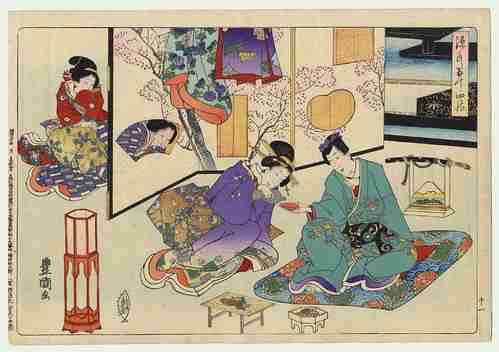26 Fun Facts About Books That Will Leave You Speechless
1. The longest book in the world is over a million words long.
Imagine a book so lengthy it takes years to finish reading. That’s the reality with the world’s longest book, which spans more than a million words. It’s a testament to the writer’s dedication and the reader’s perseverance.
Such an extensive volume challenges the limits of storytelling, inviting readers into a complex narrative that can span generations. This fun facts about books reminds us of the sheer diversity in literature, from quick reads to lifelong commitments.
2. The first printed book was created in China.
The origins of printed literature trace back to ancient China, a pioneer in the printing press invention. The first book to emerge from this revolutionary technique was the Diamond Sutra, making it a crucial piece of literary history.
This historical milestone not only changed how books were produced but also significantly widened access to knowledge. This highlights the global and ancient roots of reading culture.
3. The smallest book in the world measures just 0.07 mm x 0.10 mm.
In stark contrast to its mammoth counterparts, the smallest book in the world could be lost in a grain of sand. This micro-book contains the alphabet and requires a microscope to be read.
Creating such a tiny masterpiece showcases the incredible precision and innovation in the world of bookmaking.
4. Some books are bound in human skin.
A rather macabre aspect of bibliophilic history involves books bound in human skin, a practice known as anthropodermic bibliopegy. This rare phenomenon was occasionally found in books from the 17th to 19th centuries.
While unsettling, these instances offer a glimpse into the dark and peculiar corners of bookbinding traditions. It’s a reminder of the lengths to which human curiosity and morbid fascination with death have influenced the presentation of knowledge.
5. There’s a book that can only be read when heated.
A novel reading experience awaits with a book that reveals its text only when warmth is applied. This intriguing design uses heat-sensitive ink to engage readers in a literal hands-on approach.
This interactive method of reading adds a layer of mystery and excitement to the discovery of the narrative. It’s one of those book facts that illustrate the inventive ways authors can connect with their audience.
6. How do authors come up with ideas for books?
Authors get ideas from everywhere! Their own lives, dreams, things they see in the world, and even just asking “what if?”
7. A book was once sold for $30.8 million.
The value of a book can transcend its contents, as evidenced by the auction of Leonardo da Vinci’s Codex Leicester for $30.8 million. This sale highlights the extraordinary worth of historical documents and rare editions.
Such transactions reveal the intense fascination and value attached to original works by iconic figures that merges the worlds of art, history, and literature.
8. The first novel ever written is considered to be The Tale of Genji.

Authored by Murasaki Shikibu in the early 11th century, The Tale of Genji is often hailed as the world’s first novel. This masterpiece of Japanese literature provides a vivid portrayal of court life during the Heian period.
Its intricate narrative and depth of characterization set a precedent for future novels. This is a window into the evolution of narrative forms and the enduring power of storytelling.
9. Books used to be chained to bookshelves in the Middle Ages.
Imagine a library where books are so valued that they’re literally chained to the shelves. This was the norm in the Middle Ages, a security measure to prevent valuable volumes from being stolen.
This practice speaks volumes about the rarity and preciousness of books during a time when each was hand-copied with painstaking effort. It’s an intriguing piece of book history that reflects the evolving accessibility of reading material over centuries.
10. Iceland has more writers, more books published, and more books read per capita than anywhere else in the world.
In Iceland, books are not just a pastime but a pivotal part of the culture. This island nation boasts the highest number of writers and books read per capita globally, making it a paradise for bibliophiles.
The tradition of Jólabókaflóð, or the Christmas Book Flood, where books are exchanged as gifts and read throughout the night on Christmas Eve, underscores the deep-rooted love of literature.
11. A book without a single word exists.
A testament to the boundless possibilities of literature, there exists a book without a single word. This silent volume relies entirely on images to convey its narrative, challenging conventional notions of storytelling.
This unique approach to narrative invites readers to interpret the story through their imagination, proving that stories can transcend words.
12. The most stolen book in the world is the Bible.

Despite its moral teachings, the Bible holds the dubious distinction of being the most stolen book globally. Its ubiquity and profound significance make it a target for theft in bookstores and libraries alike.
This paradoxical fact underscores the complex relationship people have with this sacred text, seeking its wisdom so earnestly that some resort to stealing it. It’s a fascinating aspect that intertwines faith, morality, and human behavior.
13. What is the coolest thing about a library?
Libraries are full of amazing stories just waiting for you. They often have other cool things too, like movies, music, computers, and even special events. Plus, most libraries let you borrow all these things for free with a library card.
14. The most translated book is the Bible.
The Bible is not only the most sold book worldwide but also the most translated. It has been translated into thousands of languages, reaching a vast audience across different cultures and regions.
This wide translation effort reflects its significant impact on human history and culture. Its universal messages have been made accessible to a diverse global audience, illustrating the power of translation in bridging cultural divides.
15. Libraries have existed for thousands of years.
The history of libraries dates back several millennia, with the earliest known library belonging to the ancient Sumerians around 2600 BCE. These repositories of knowledge were central to scholarly and public life in ancient societies. The longevity and continuity of libraries underscore their importance in human civilization.
They have evolved from clay tablets to digital formats, adapting to the changing ways we create and consume literature.
16. The first book ever sold on Amazon was a science textbook.

Amazon, now a giant in online retail, sold its first book in 1995, which was a science textbook titled “Fluid Concepts and Creative Analogies: Computer Models of the Fundamental Mechanisms of Thought.” This humble beginning marked the start of a revolution in how books are bought and sold.
The story of Amazon’s first sale is a reminder of the internet’s transformative impact on the book industry. This transition to online sales has made books more accessible to a global audience.
17. A novel was written without using the letter ‘e’.
“Gadsby” by Ernest Vincent Wright is a novel that remarkably avoids the letter ‘e,’ the most common letter in the English language. This linguistic feat required meticulous planning and creativity, demonstrating the author’s commitment to the challenge. It’s a unique exploration of the constraints and possibilities within language.
This constraint not only showcases the author’s ingenuity but also invites readers to consider the role of each letter in language.
18. Some books can smell like vanilla due to lignin in the paper.
Old books have a distinctive smell that many find comforting and nostalgic. This scent, often likened to vanilla, comes from the breakdown of lignin, a chemical compound in paper.
The smell of books can evoke memories and emotions, connecting us to past reading experiences. This sensory experience adds another layer to the enjoyment of books, beyond just the words and stories they contain.
19. The largest book fair in the world is the Frankfurt Book Fair.
The Frankfurt Book Fair in Germany is the largest of its kind, drawing publishers, authors, and readers from around the globe. This annual event is a major highlight in the literary calendar, showcasing the latest in publishing.
It’s an exciting gathering place for the exchange of ideas and stories. This fair highlights the global nature of the book industry, offering a window into the diversity of literary cultures. It’s a fascinating facts about books that celebrates the international community of readers and writers.
20. A single book helped to standardize the English language.

The King James Bible, published in 1611, played a pivotal role in standardizing the English language. Its widespread use across England and beyond made its version of English the norm.
It’s fascinating how a single publication could influence the development of a language so profoundly. Its phrases and vocabulary seeped into everyday language, cementing its impact on English communication.
21. A book was written in a single day.
Italian author Domenico Starnone wrote “Blindly” in just 24 hours, a feat that challenges the notion of the writing process as necessarily long and arduous. This experiment demonstrates the possibilities of intense focus and creativity under pressure.
It’s an intriguing approach to storytelling, pushing the boundaries of how we think about the craft of writing. This example inspires both aspiring and seasoned writers to explore their limits.
22. Why would I want to join a book club?
Book clubs let you talk about your favorite books with other kids who love to read, and you might find cool new books that you’ve never heard of.
23. Books can be waterproof.
For those who love to read by the pool or in the bath, waterproof books are a game-changer. These durable volumes are designed to withstand exposure to water, allowing readers to enjoy their favorite stories in any setting.
It’s a practical innovation that caters to avid readers everywhere. Waterproofing technology has expanded the environments in which books can be enjoyed, removing the fear of water damage.
24. The concept of the dust jacket was originally to protect books during transport.

Today, dust jackets are an integral part of a book’s appeal, often designed with intricate artwork to entice readers. Originally, however, they were plain wrappers meant to protect books from dust and damage during transport.
The transition from protective sheath to marketing tool is a testament to the evolution of book presentation. Collectors often seek out original dust jackets, which can significantly increase a book’s value. It’s a book fun fact that illustrates the changing perceptions of what is considered valuable in the literary world.
25. A silent book club exists where people gather to read in silence.
The Silent Book Club, or “Introvert Happy Hour,” offers a unique way for book lovers to enjoy reading together in silence. Participants meet to read their own books in shared company, without the pressure of social interaction or discussion.
It’s a novel concept that celebrates the solitary joy of reading while fostering a sense of community. This format acknowledges the introverted side of book enthusiasts, providing an environment to read in silence.
26. The largest collection of books ever amassed belonged to the British Library.
For those who dream of endless shelves of books, the British Library’s collection is the pinnacle of bibliophilic desires. It holds millions of items, from manuscripts to modern publications, covering every conceivable subject.
This incredible accumulation of knowledge serves as a global resource for researchers and book lovers alike. It’s a testament to humanity’s unquenchable thirst for information and stories.
FAQs
Horror books give you a safe way to feel scared and excited. It’s like riding a rollercoaster – thrilling, but you know you won’t really get hurt.
History books help you understand how the world became the way it is today. They’re full of stories about real people and amazing events from the past.
Holy books are special books for different religions. They contain stories, rules, and beliefs that are important to people of that faith.
Find a comfy spot to read, pick books about things you love, and maybe even read with a friend or a grown-up.
Harry Potter has exciting adventures, cool spells, amazing creatures, and shows that even ordinary kids can be brave and do great things.







